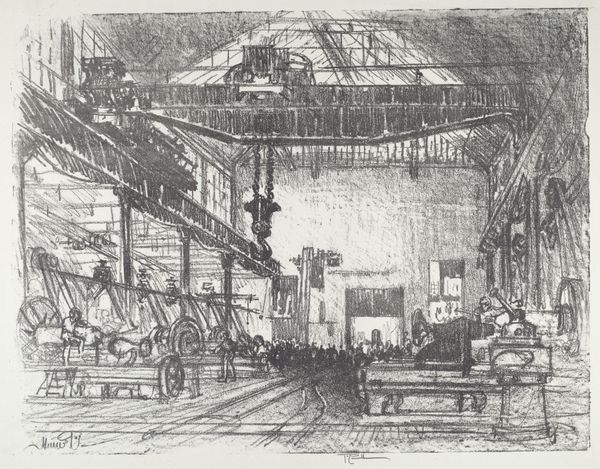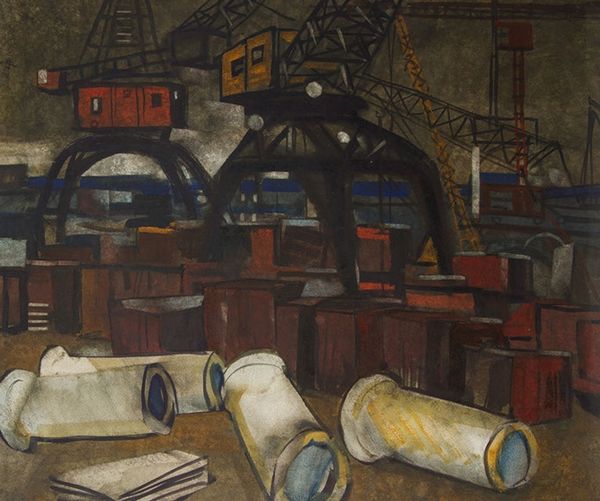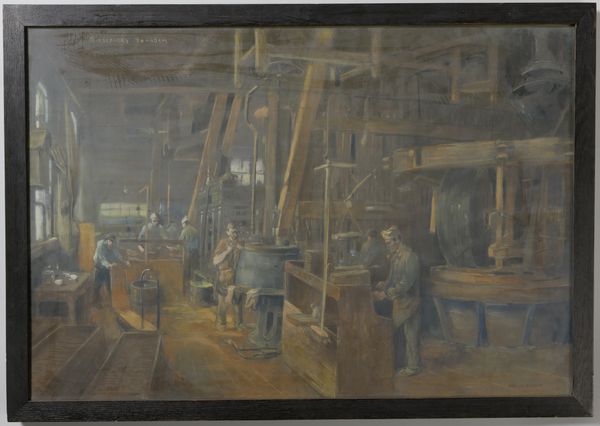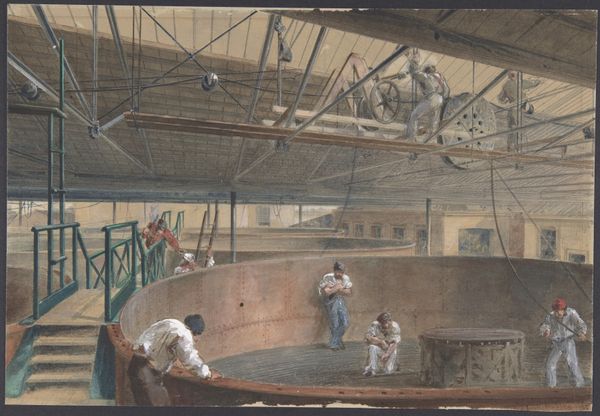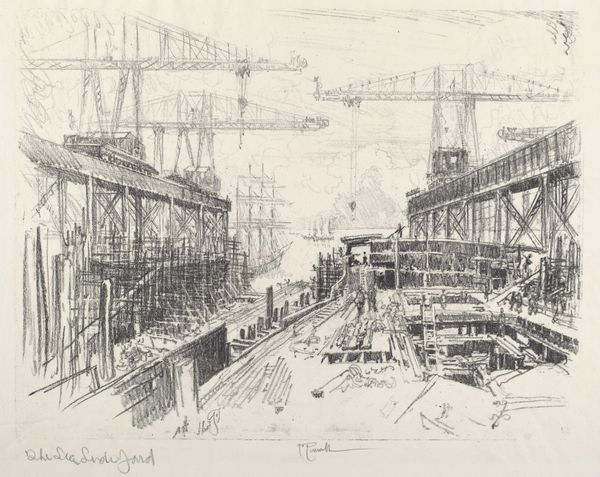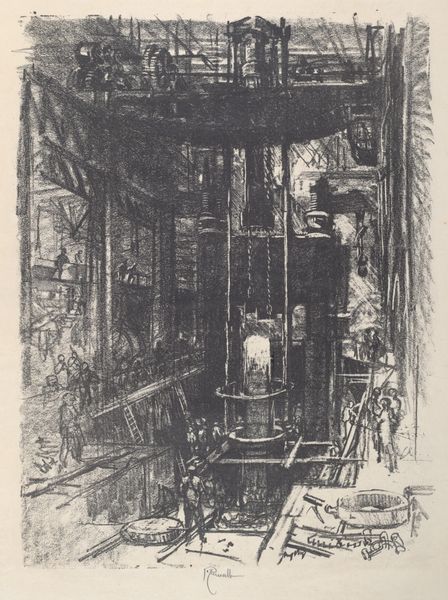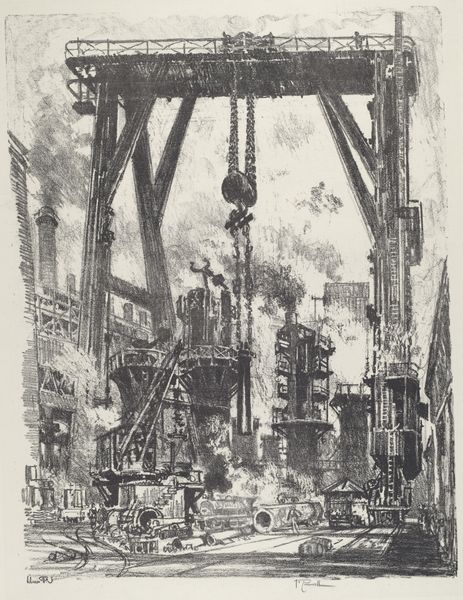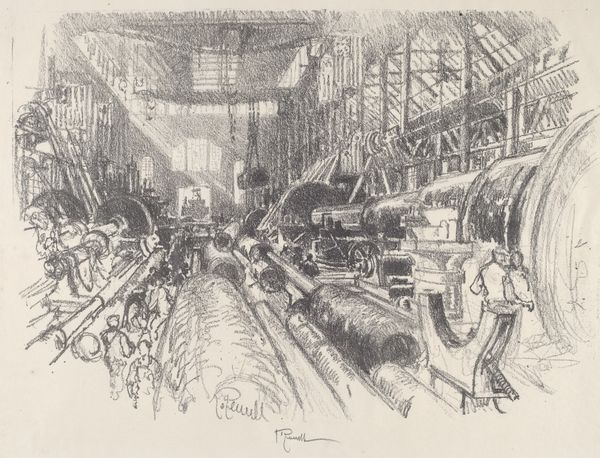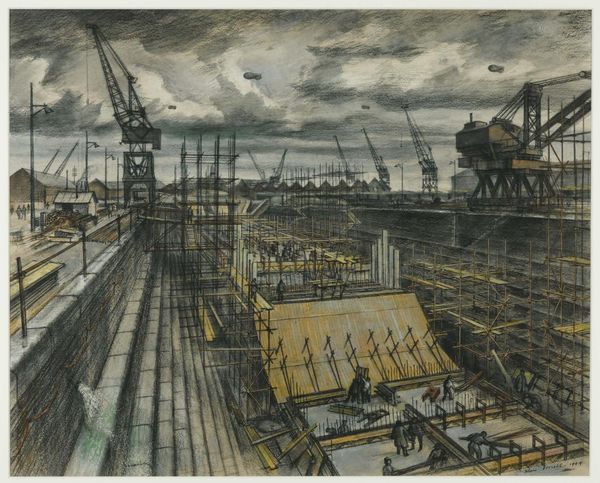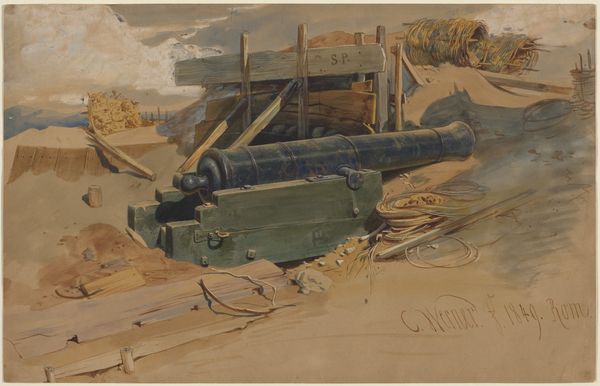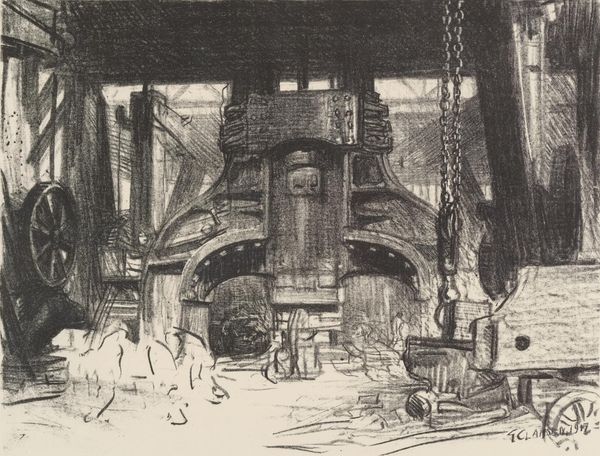
Dimensions: support: 1514 x 1268 x 25 mm frame: 1676 x 1435 x 85 mm
Copyright: © Anthony Eyton. All Rights Reserved 2010 / Bridgeman Art Library | CC-BY-NC-ND 4.0 DEED, Photo: Tate
Editor: This is Anthony Eyton's "Bankside - The Turbine Hall." It's an oil painting depicting the Bankside Power Station before it became the Tate Modern. There's a feeling of industry, but also of abandonment. What do you see in this piece? Curator: I see a poignant commentary on the shifting landscape of labor and power. The Turbine Hall, once a symbol of industrial might, is rendered almost as a relic, its purpose evolving. What does it mean to repurpose spaces of production into spaces of art consumption, and who benefits from this transition? Editor: That's a great point. I hadn't considered the social implications of the transformation. Curator: The layering of paint itself mimics the layers of history and the social structures at play, don't you think? It invites us to question the narratives we construct around progress and displacement. Editor: I do. I'll definitely look at it differently now. Thank you. Curator: My pleasure. Hopefully, it challenges us to view familiar spaces with a more critical and socially aware perspective.
Comments
tate 6 months ago
⋮
http://www.tate.org.uk/art/artworks/eyton-bankside-the-turbine-hall-t07125
Join the conversation
Join millions of artists and users on Artera today and experience the ultimate creative platform.
tate 6 months ago
⋮
Eyton was born in London and from 1947 to 1950 studied at Camberwell School of Art where he later taught. Other teaching posts followed at the Royal Academy Schools and St Lawrence College, Ontario. In 1987 Eyton was elected Royal Academician. In 1994 Eyton was one of a number artists invited by Tate to work in the interior of Bankside power station, now Tate Modern. This picture captures the enormous scale of the turbine hall. He wrote: ‘the machinery looked like modern sculpture and everywhere there were the colours of rust and blue paint’. Gallery label, August 2004
